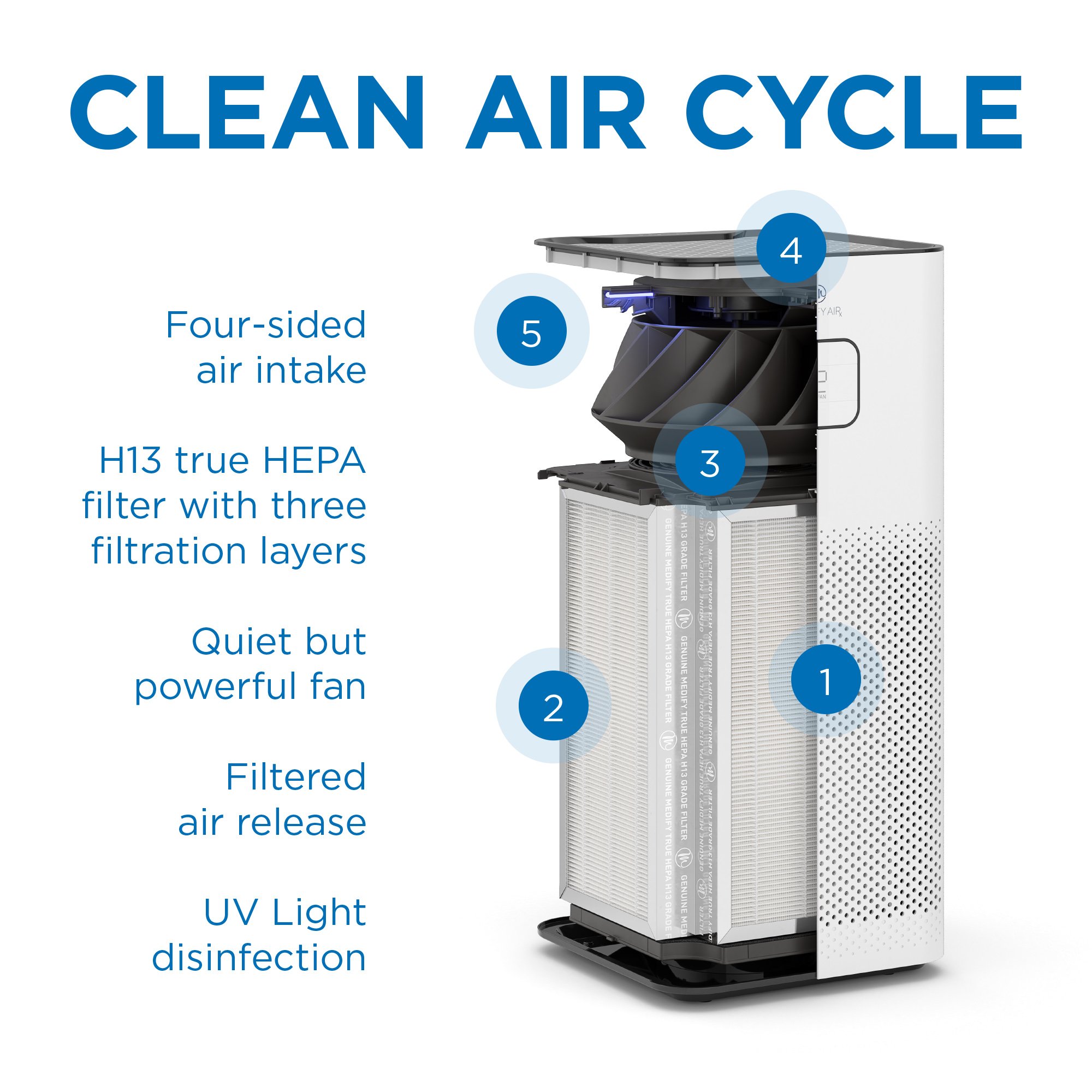One of the most common questions people have when considering air purifier types is whether to get a model with UV functionality or not. These air purifiers can provide an enhanced approach to killing mold spores and bacteria - but non-UV purifiers with HEPA H13 filters already remove 99.9% of particles. UV filters offer state-of-the-art technology that can add an extra layer of protection which is especially helpful for high-risk individuals. Here’s what you need to know about UV vs. Non-UV air purifiers.
Making the Case for UV Air Purifiers
Simply put, high-intensity UV light kills viruses, bacteria, and spores from things like mold because it disrupts the chemical bonds in their DNA. When pathogens are neutralized by UV radiation, they lose their ability to cause disease in humans and are essentially disinfected.
In an air purifier, UV light is emitted through a special bulb. UV light is contained within the body of the air purifier in order to prevent harm to people. As air is pulled through the purifier, it’s passed under the bulb which exposes any microorganisms to the UV light. UV purification is most effective when microorganisms have prolonged contact with the light - so the longer the virus or other spores are bathed in it, the more extensive the damage to the particles and the cleaner the air.
It’s important to note that UV air purifiers work best as part of an overall air cleanliness routine. Just using UV light alone is not enough to properly disinfect the air, especially in today’s current environment where we all need to be extra cautious about COVID-19.
Is There a Downside to UV Air Purifiers?
Since UV provides an added layer of protection, it seems like opting for the UV air purifier option is a no-brainer. However, there are a couple of things to be aware of when evaluating if you really require a UV air purifier. For one thing, they tend to cost a little more at the time of purchase. The bulbs can also wear out over time, so it’s important to monitor regularly to make sure they’re still working effectively.
Furthermore, the high-energy nature of UV radiation means that it can cause plastics to deteriorate. Buyers need to ensure that the UV air purifier they choose is carefully engineered to prevent insulated wiring or other plastic parts from being exposed to the UV light. Ironically, a poorly designed UV air purifier can actually result in more airborne contamination.
That’s why it's essential to choose a high-quality air filter with both commercial and residential applications, such as the Medify Air MA-50 Air Purifier.

This model uses an H13 True HEPA filter with three levels of filtration to catch and remove allergens, pet dander, and more. In addition, it offers UV disinfection with a long-lasting UV lightbulb as well as several other features that remove and destroy 99.9% of particles down to 0.1 microns. If you need help choosing between a UV air purifier model and a non-UV air purifier model, reach out to one of our experts. They can address your unique space, budget, and health needs to determine the best model for you.



